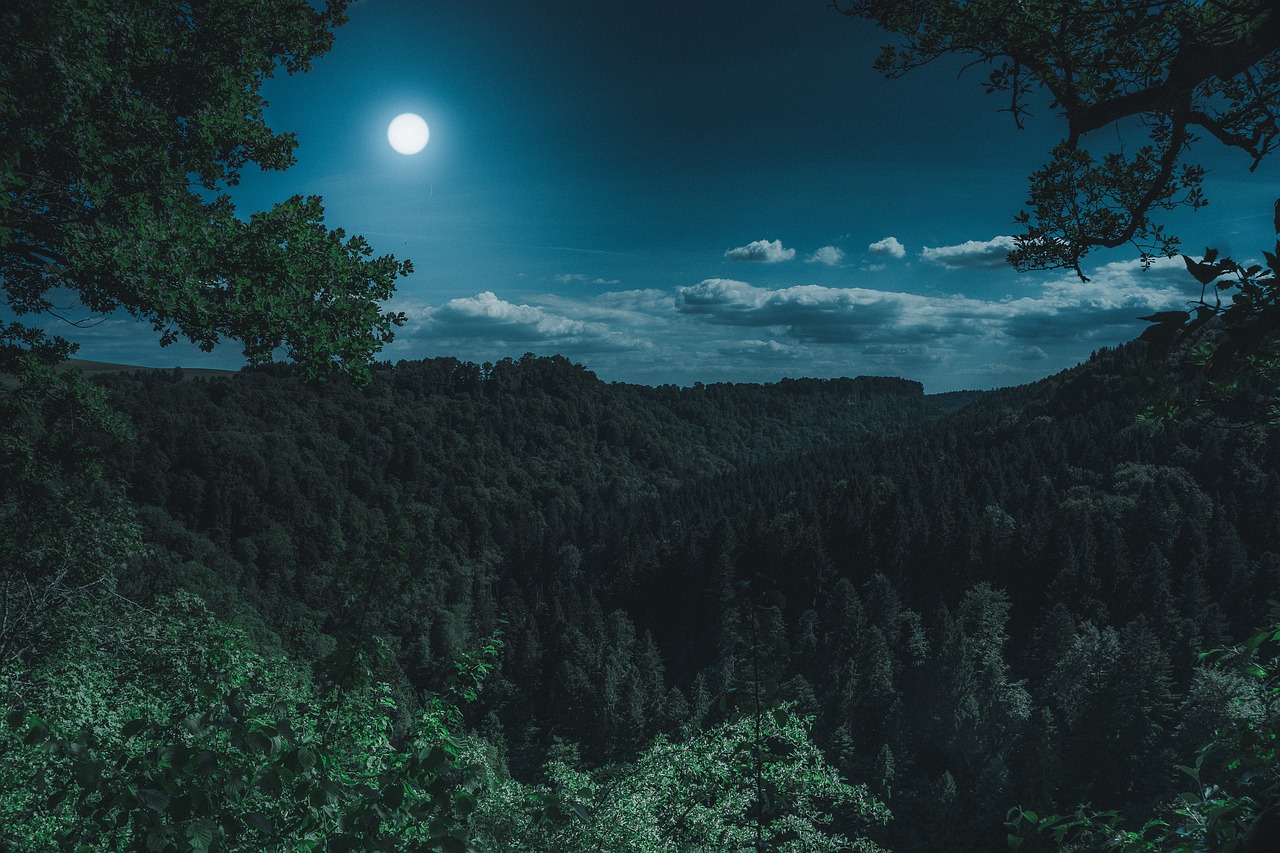Does the moon influence a woman’s menstrual cycle? This question has been hotly debated for a long time. A new study by chronobiologists in Würzburg now speaks in favour of such an influence. However, it is complicated.
Wurzburg/BRD, January 27th, 2024. The blog ‘Ladyplanet. Naturally being a woman’ is certain: ’Our cycle is linked to that of the moon. The most obvious connection is the length of the two cycles,’ it says. The Berliner Tagesspiegel comes to the opposite conclusion: ‘The length of a woman’s cycle is an average value, for some it lasts longer, for others it is shorter. Even one and the same woman can have cycles of different lengths. If there really were a connection to the moon, all women should have their fertile days at the same time,’ it says in the knowledge section.
So what is true? A team led by Würzburg chronobiologist Charlotte Förster has now scrutinised the connection between the lunar and menstrual cycles of women using scientific methods. The result: human reproductive behaviour and the menstrual cycle of women were probably still synchronised with the lunar cycle in ancient times. However, modern lifestyles and artificial light have largely changed this synchronisation. Förster holds the Chair of Neurobiology and Genetics at Julius-Maximilians-Universität Würzburg (JMU). The results of her study have now been published online in the journal Science Advances.
Correlation between moon phases, pregnancy and birth rate
‘We know of many animal species in which reproductive behaviour is synchronised with the lunar cycle in order to increase reproductive success,’ says Charlotte Förster. Since the menstrual cycle of women is similar in length to the lunar cycle with its approximately 29.5 days, it is reasonable to suspect that there is also a connection for them. There are also a number of other findings in favour of this: several older studies show that women whose cycles are in sync with the moon have the highest probability of becoming pregnant. Two large longitudinal studies show a significant correlation between birth rate and moon phase, with a slight increase in birth rate at full moon and a corresponding decrease at new moon. More recent findings also indicate that births are more likely to occur at night during a full moon and during the day during a new moon.
In order to clarify the influence of the moon on human reproduction, Förster and her colleagues from Munich, Buenos Aires and the USA analysed the menstrual cycles of 22 women who kept a diary – in some cases over a period of 32 years. ‘As far as we know, this approach to analysing such long-term data has not been used before,’ says Förster. Instead, previous studies have analysed a large number of women in their entirety, combining the results of different women, age groups, years and seasons.
The moon orbits the earth in several cycles
The team correlated the records of the 22 women with the lunar cycle. Whereby ‘lunar cycle’ is actually an inadmissible simplification. ‘From a scientific point of view, the moon has three different cycles that periodically change its brightness and the force of gravity with which it acts on the earth,’ says Förster. Firstly, there is the change between full moon and new moon, which occurs – with slight fluctuations – every 29.53 days on average. Secondly, the moon does not orbit the earth in a fixed path; instead, its position relative to the equator fluctuates. Sometimes it is more to the north, sometimes more to the south. This cycle lasts 27.32 days. The third cycle is slightly longer with an average of 27.55 days. This is due to the fact that the moon follows the earth on an elliptical orbit and is therefore sometimes closer to it and sometimes further away.
All of these cycles influence the intensity of moonlight and the force of gravity, which is visible in the tides, for example, in different ways. In addition, they interact with each other and can lead to special constellations at longer intervals, which are accompanied by special phenomena, such as a solar eclipse, which is part of a fixed cycle in which such a darkening of the sun is repeated around every 18 years.
Moonlight is the strongest clock generator
‘All three lunar cycles influence the onset of menstruation in women“: this is the verdict of the scientists after analysing the records of the study participants. The nocturnal moonlight appears to be the strongest clock generator, but the gravitational forces of the moon also contribute to this.
Of course, not all women follow the alternation of light and dark in the night sky – and if they do, then usually only for certain periods of time. On average, menstruation in women under the age of 35 is synchronised with the full or new moon for just under a quarter of the recorded time. For women over the age of 35, this is the case for just under a tenth of the time on average. It is not only with age that the synchronisation of the lunar and menstrual cycles decreases: it also appears to decrease to the extent that women are exposed to artificial light sources at night. Typical ‘night owls’ who go to bed late and leave the light on for a correspondingly long time do not show any obvious synchronisation with the moon.
A sense of gravity
According to the scientists, the fact that the synchronisation only occurs sporadically and that women differ from each other in the course of their menstrual cycles suggests that the moon’s light-dark cycle alone is not a strong clock generator. They therefore believe it is likely that gravity also influences menstrual cycles. ‘In the second halves of the years 1961, 1979, 1997 and 2015, the menstrual cycles of seven out of nine women were synchronised with the change from full moon to new moon,’ says Charlotte Förster. This interval of 18 years corresponds exactly to the rhythm in which the three lunar cycles combine to form very special constellations. This conjunction could have increased the strength of the moon as a clock.
The observation that gravity sets a rhythm for humans could explain why certain cycles, such as menstruation, but also the onset and duration of sleep, are temporarily linked to either the full moon or the new moon: In both phases, the influence of the moon’s gravity on the earth is similar. The effects of gravity could also explain the observation in a study that both the onset and duration of sleep in students are synchronised with the lunar cycle – even though they live in Seattle, a city that is so bright at night that the moonlight is barely perceptible.
For Förster and her colleagues, all these observations suggest that the human organism can react not only to rapid changes in gravity, as perceived by the equilibrium system, but also to slow, periodically recurring gravitational changes. However, the scientists are aware of the limited significance of their study due to the relatively small number of women examined. Their hopes are therefore pinned on the use of technology that is as simple as it is modern: a mobile phone app. This would make it possible to investigate the relationship between menstrual and lunar cycles and the influence of artificial light in a large number of women around the world.
Translated with DeepL_com
Originalpublikation:
Women temporarily synchronize their menstrual cycles with the luminance and gravimetric cycles of the Moon. C. Helfrich-Förster, S. Monecke, I. Spiousas, T. Hovestadt, O. Mitesser, T. A. Wehr. Sciences Advances, 27. Januar 2021. DOI: 10.1126/sciadv.abe1358
ImageSource Florian Kurz Pixabay



Schreibe einen Kommentar